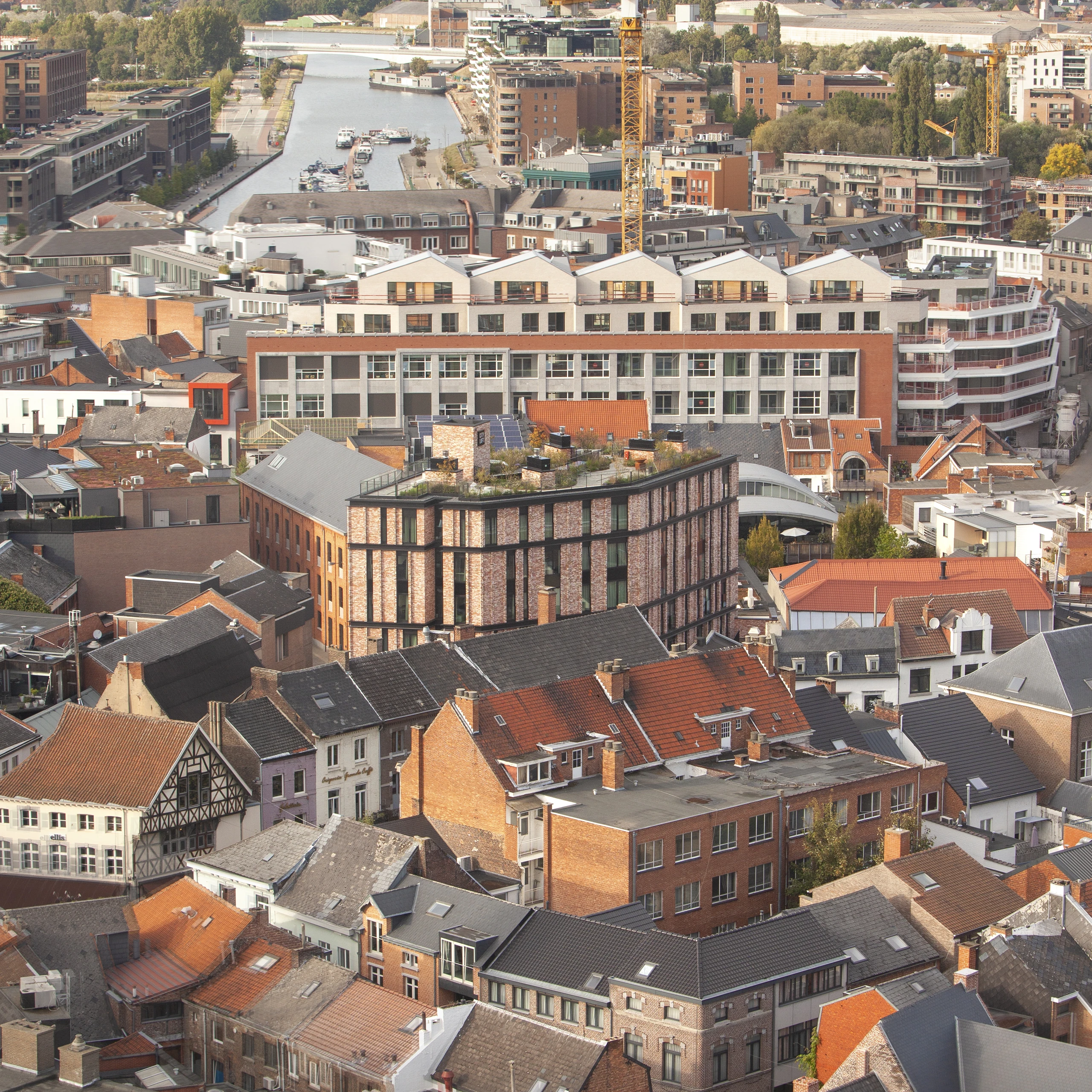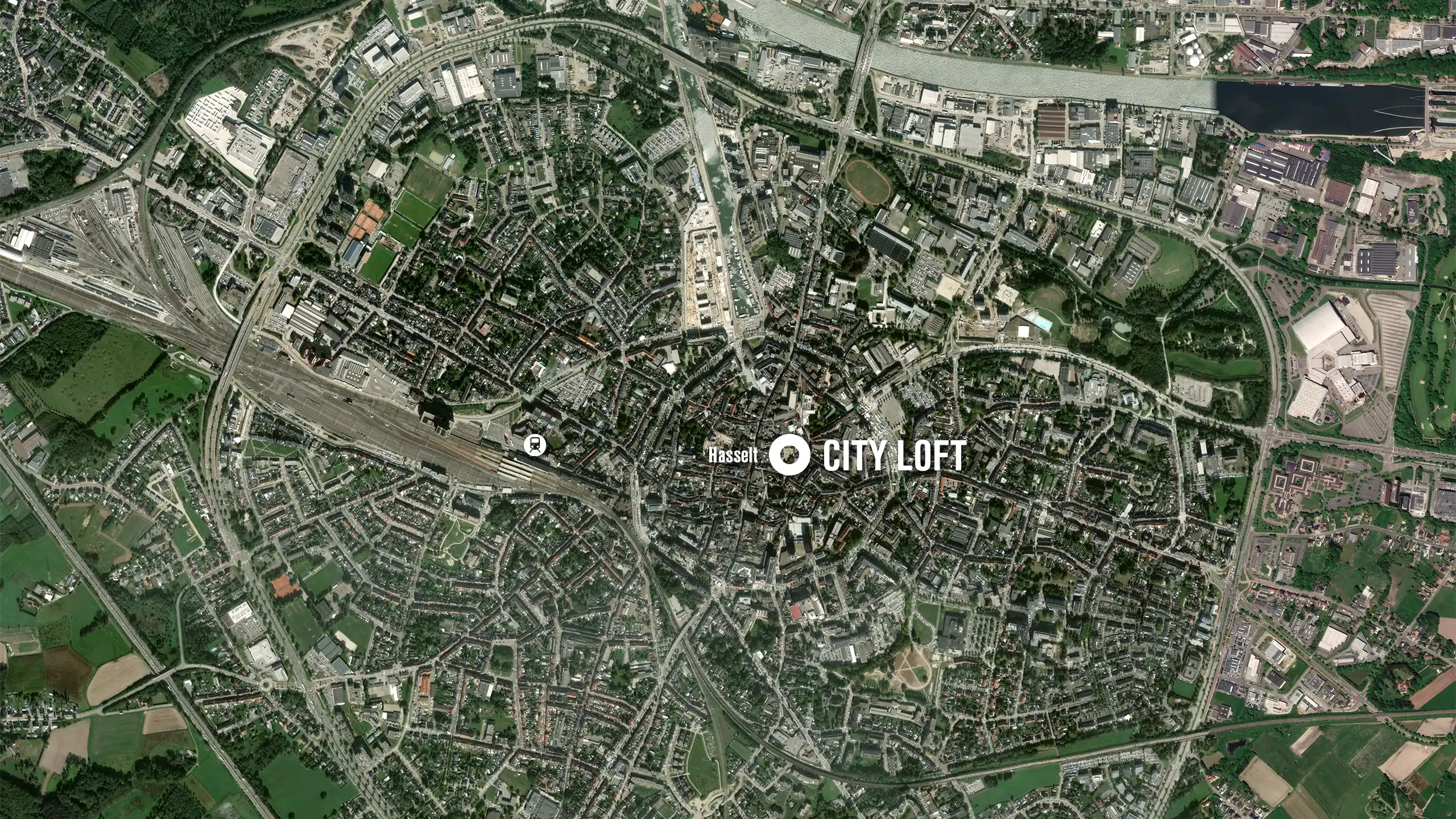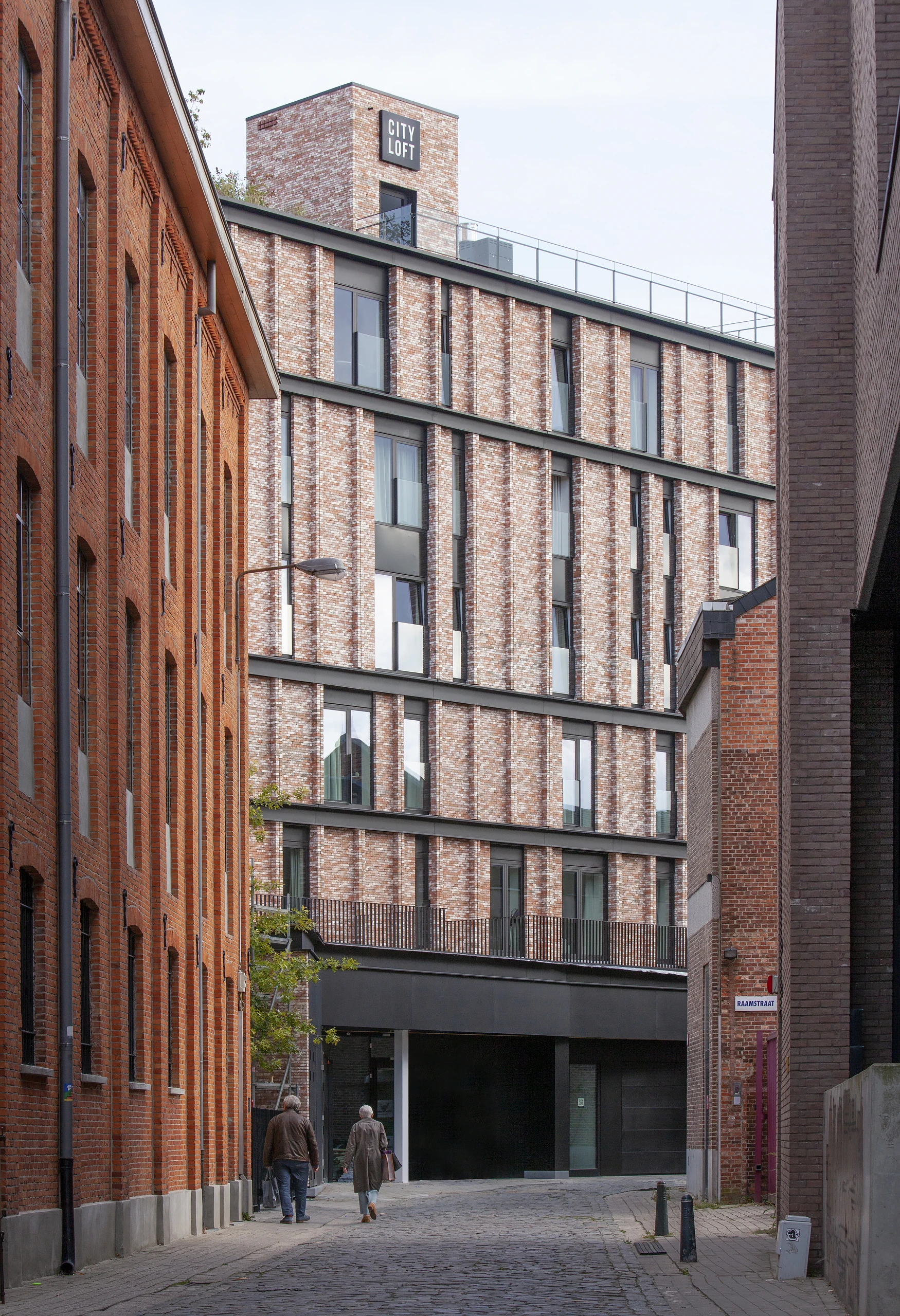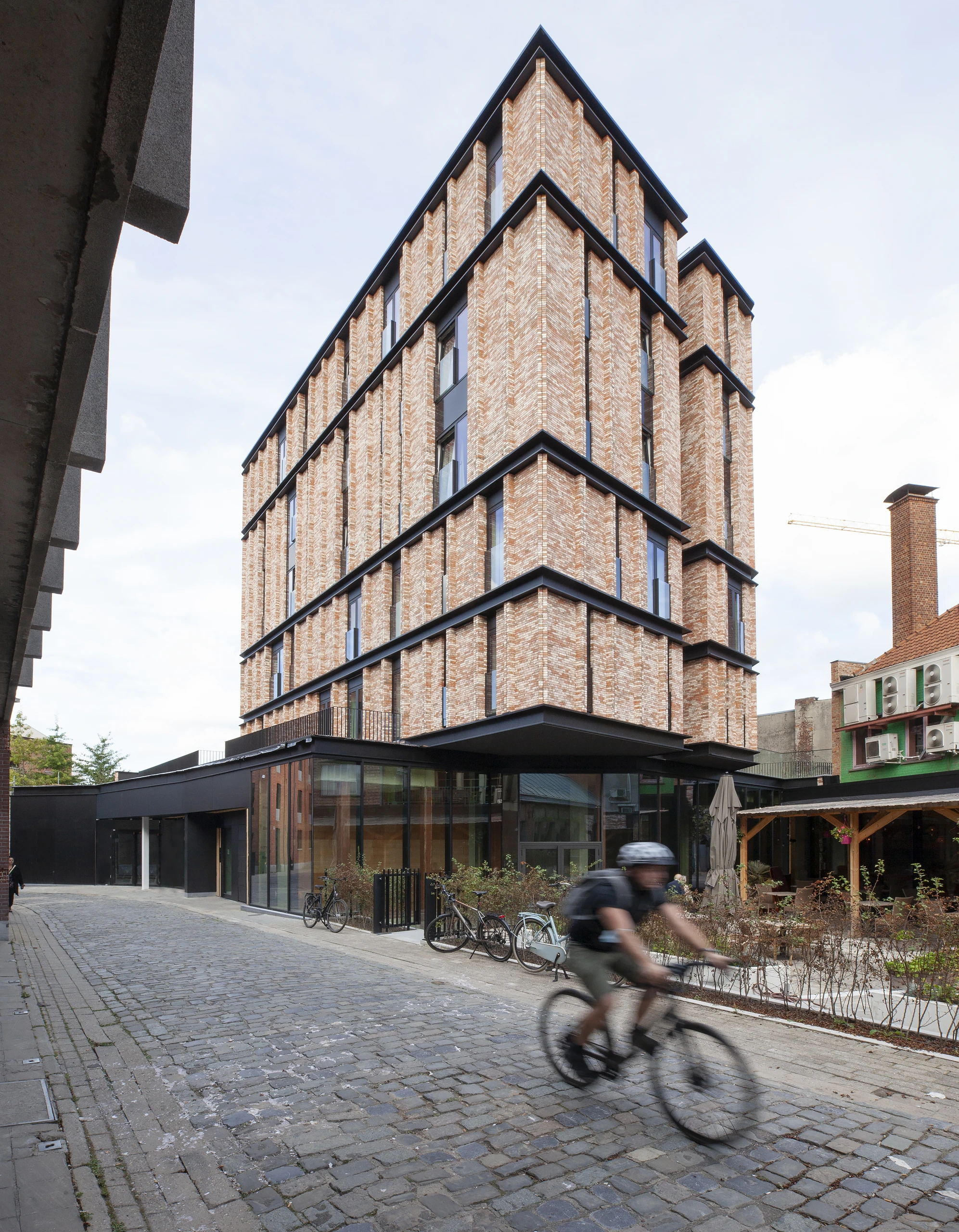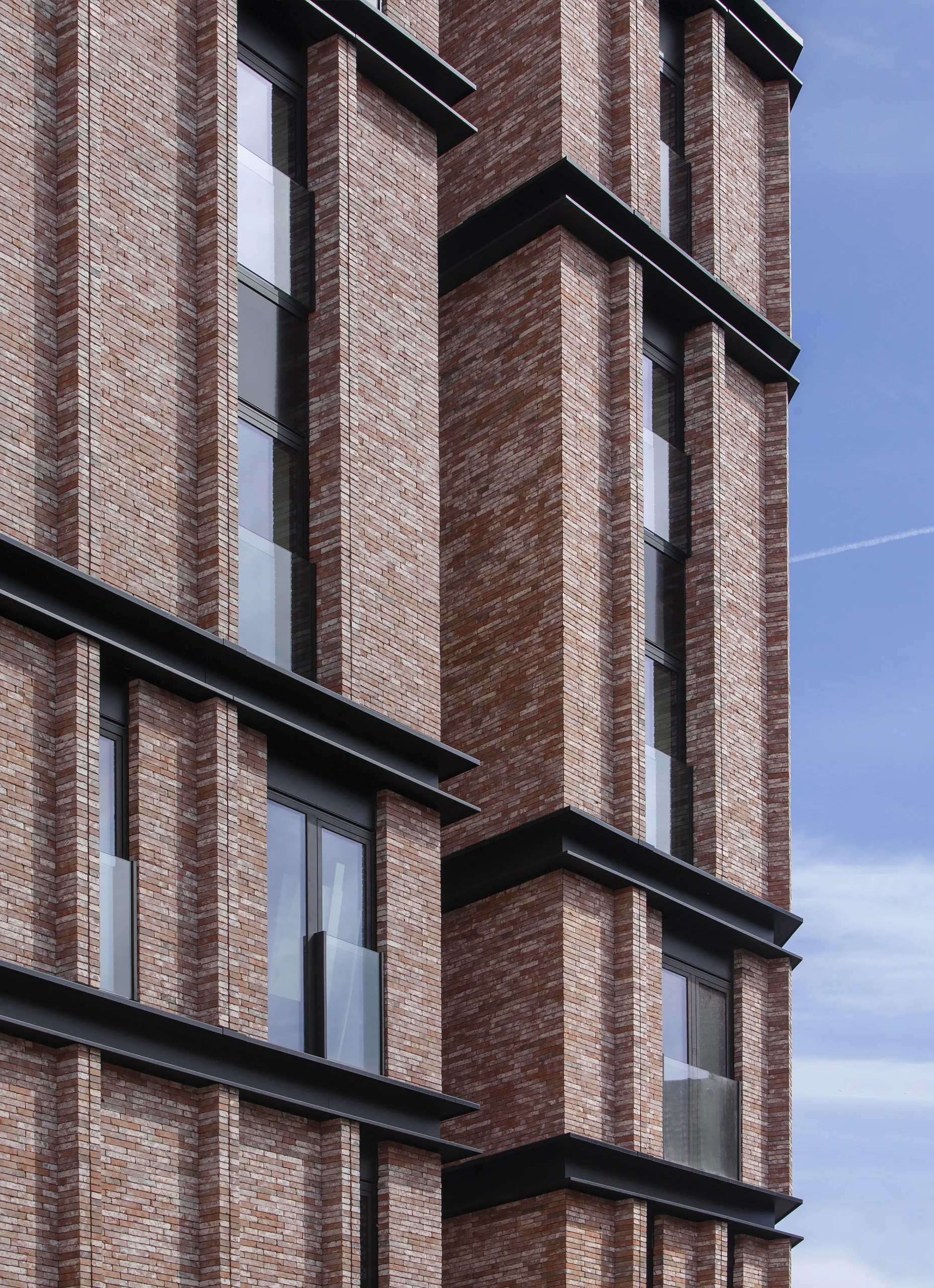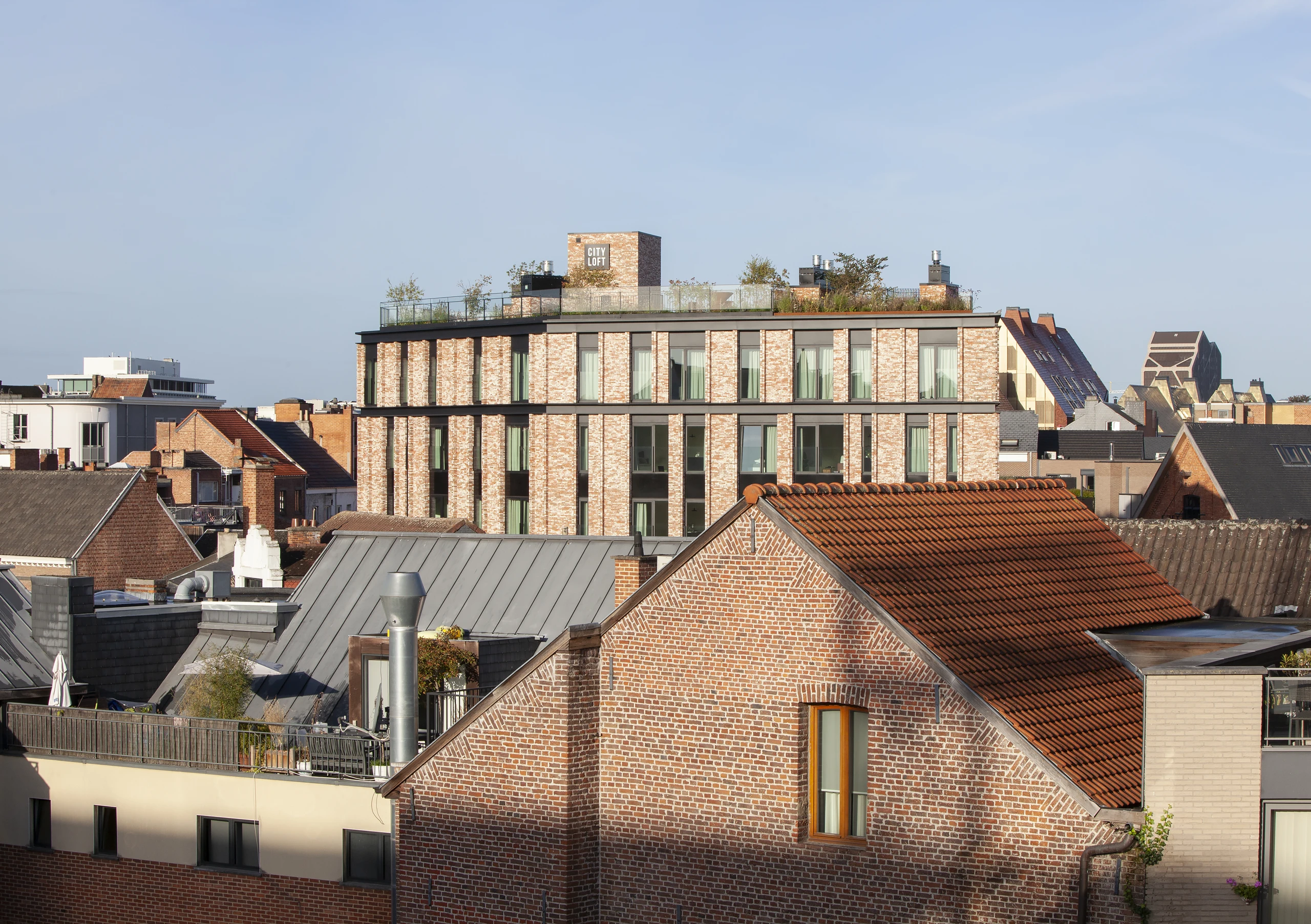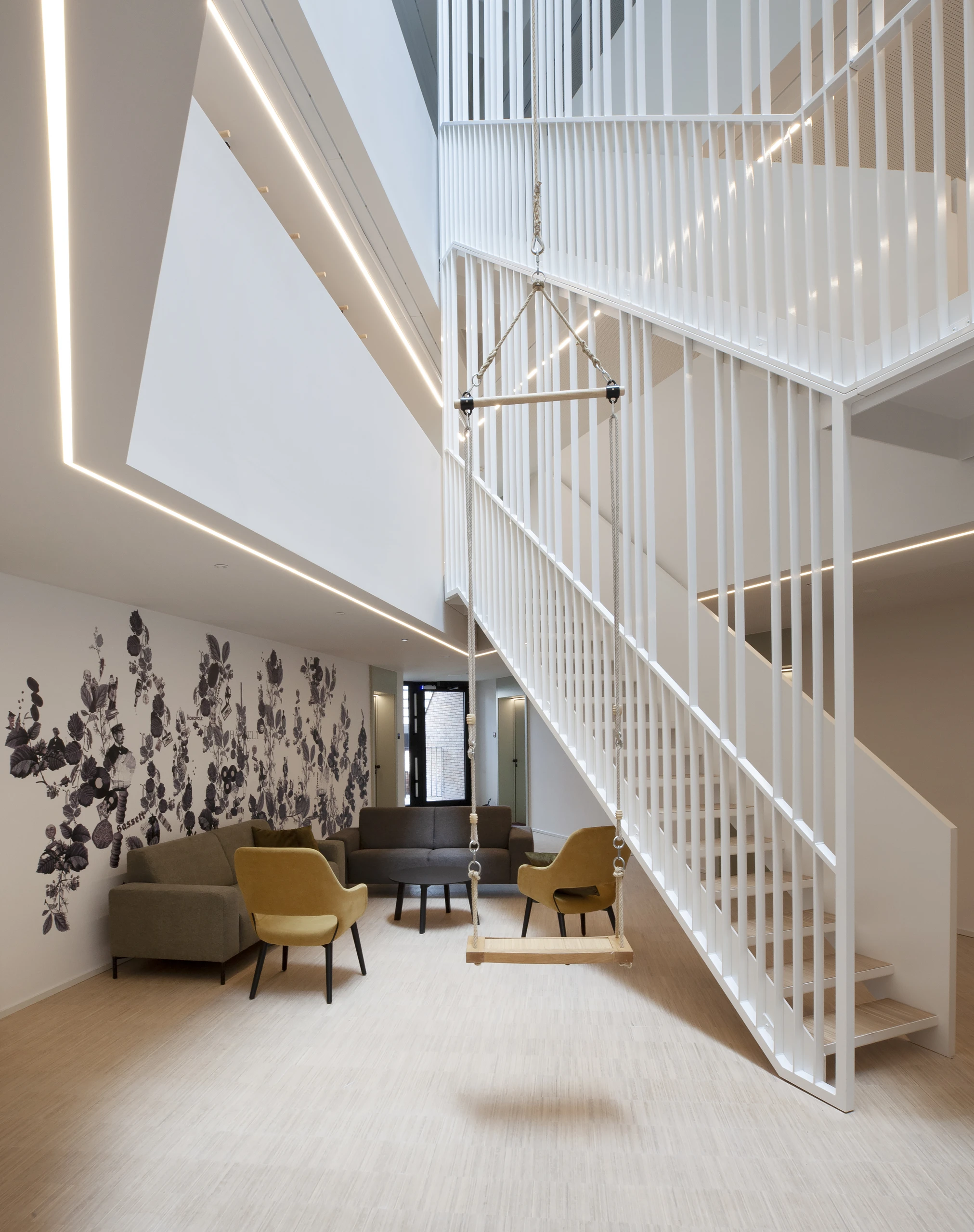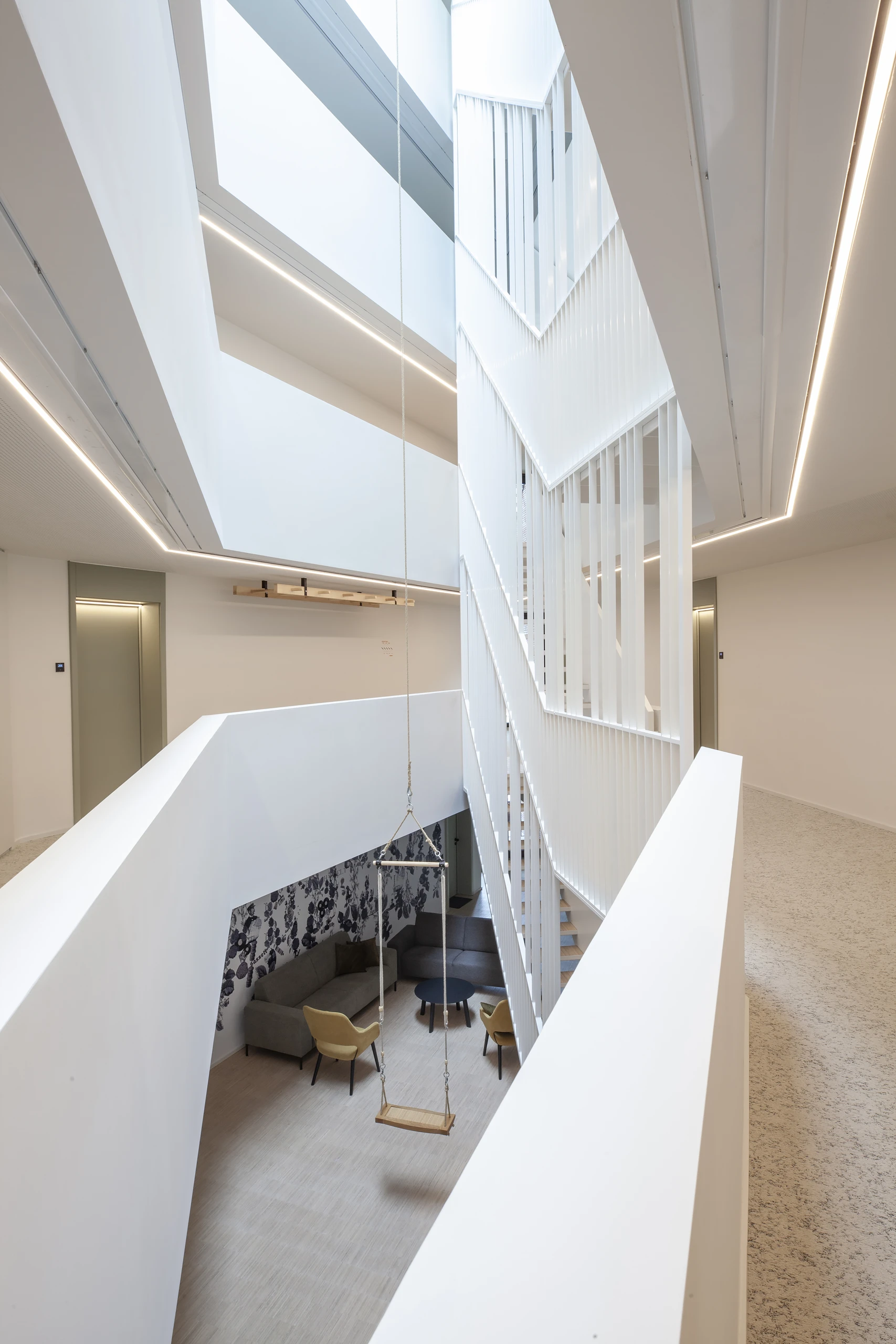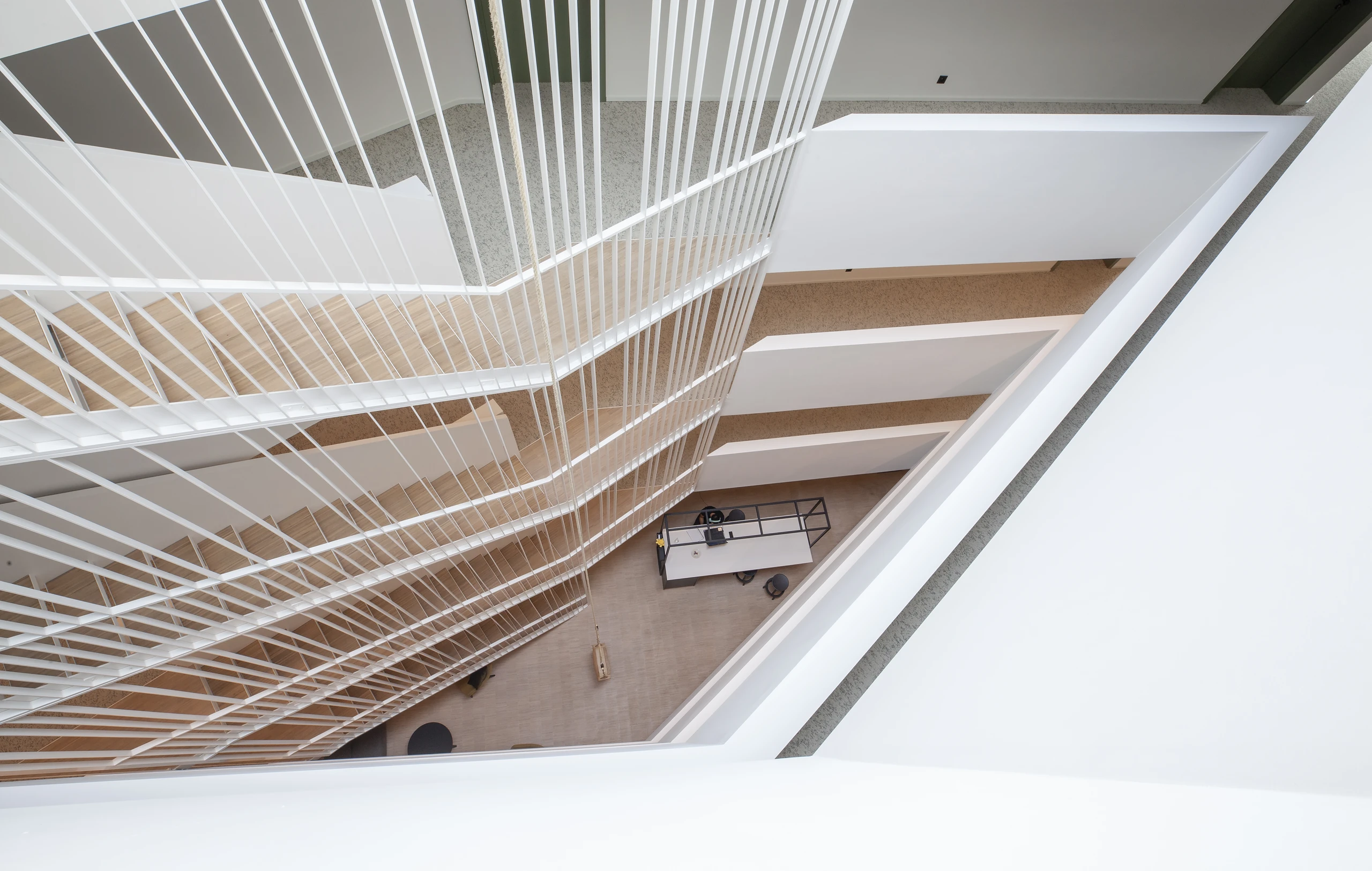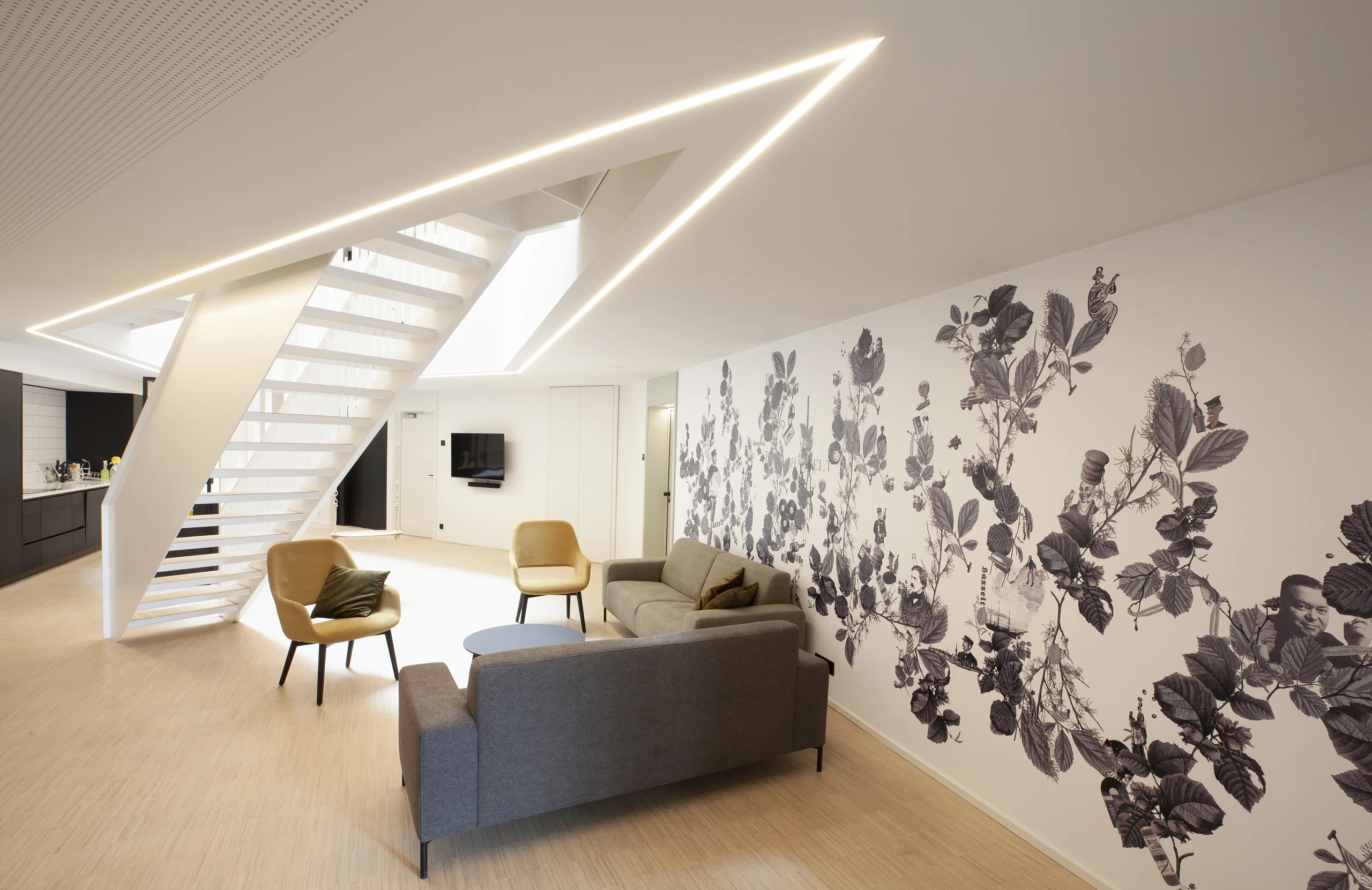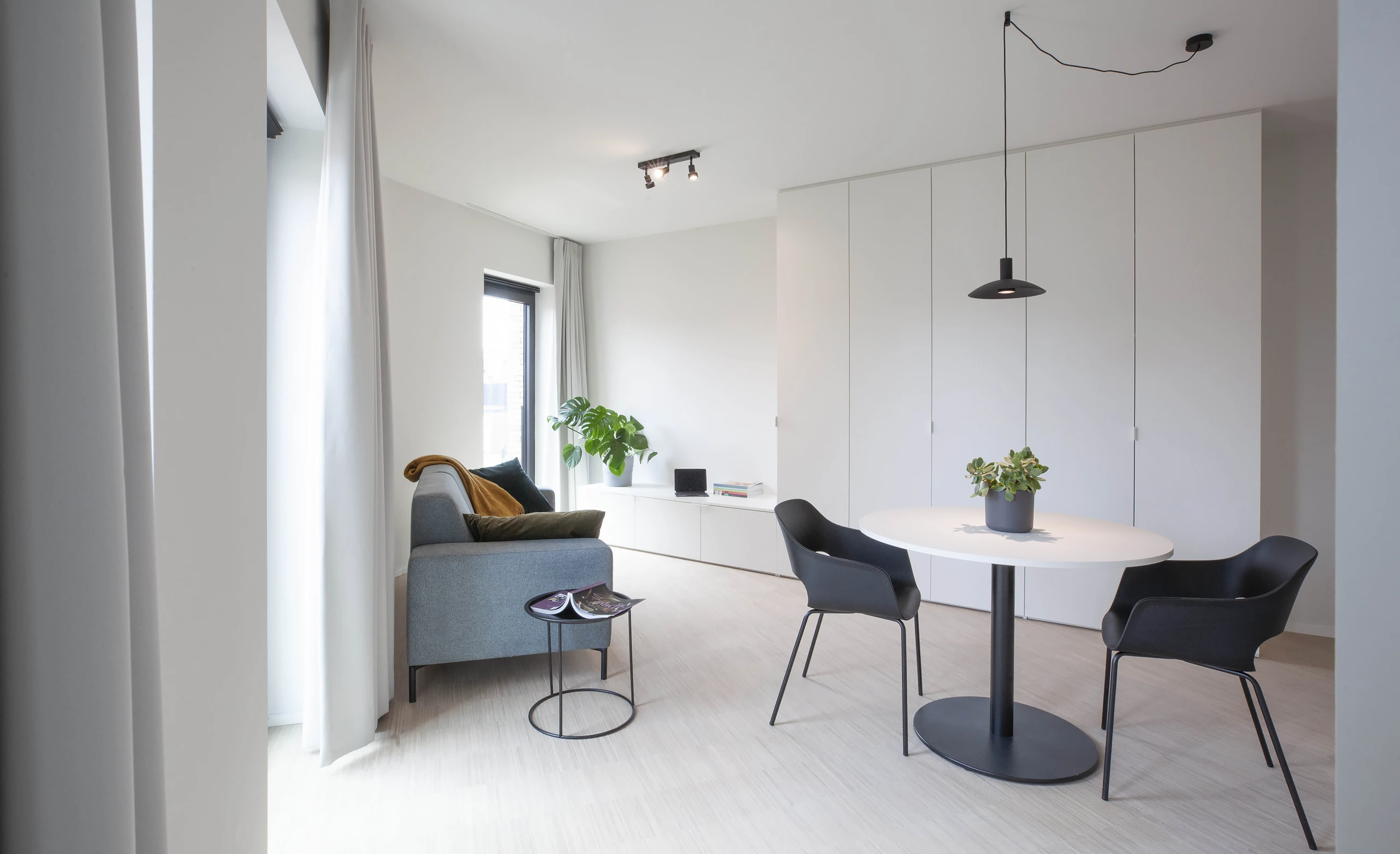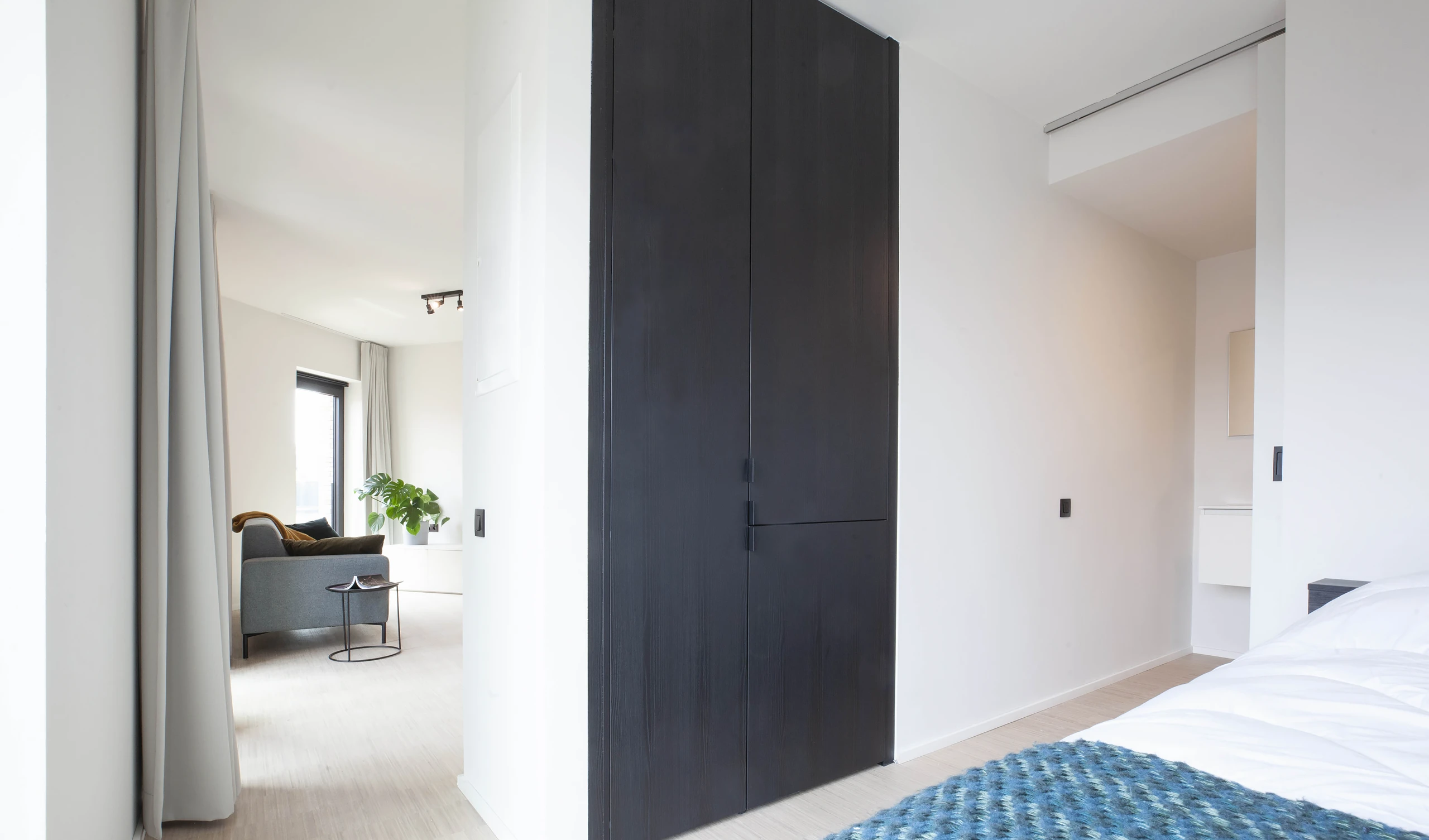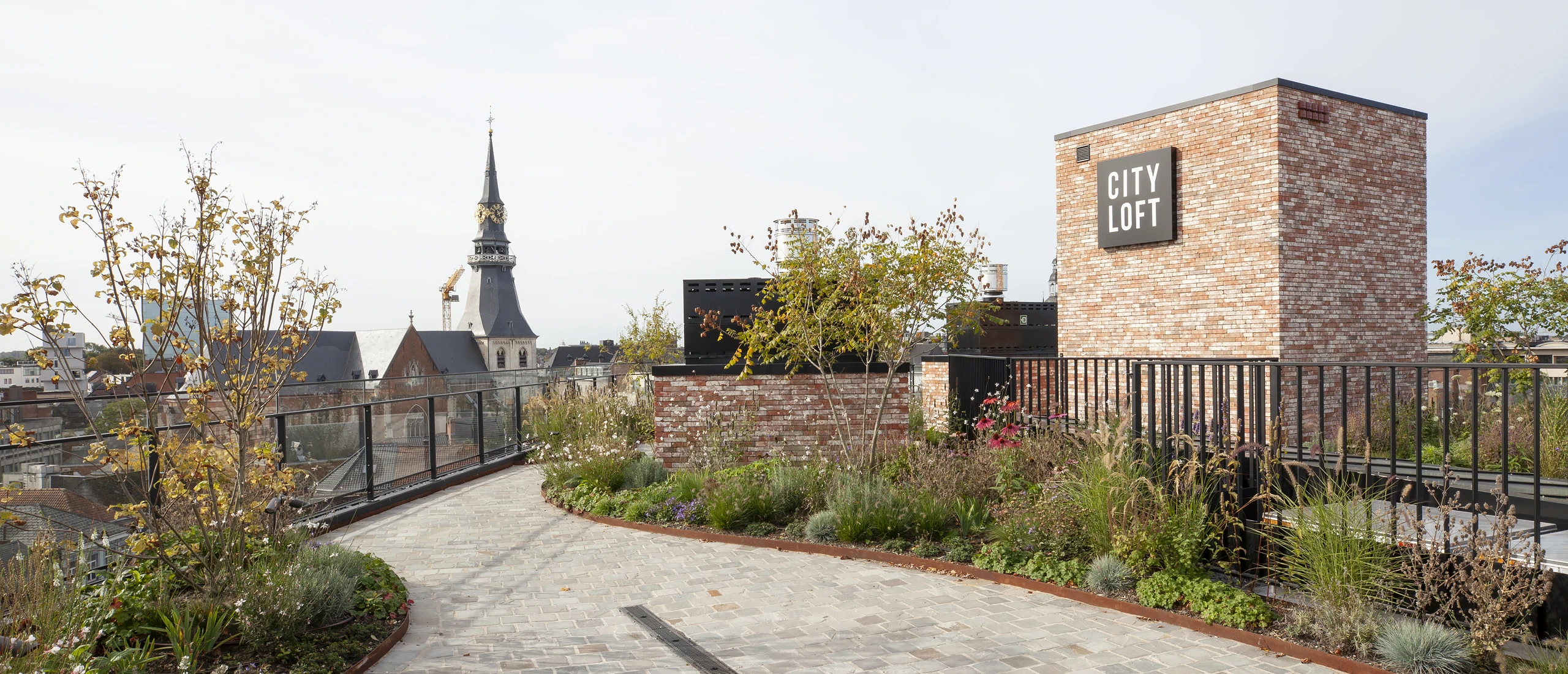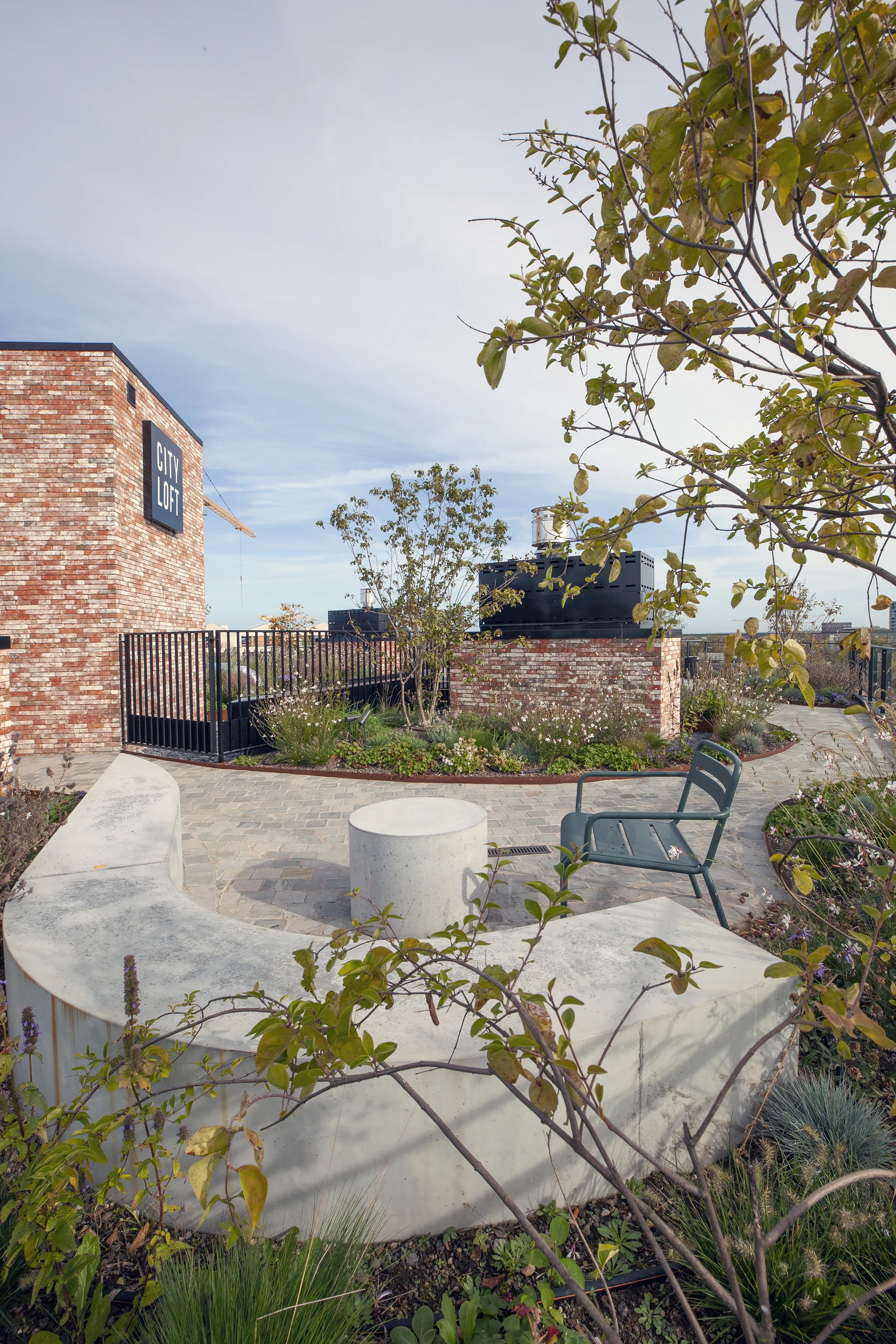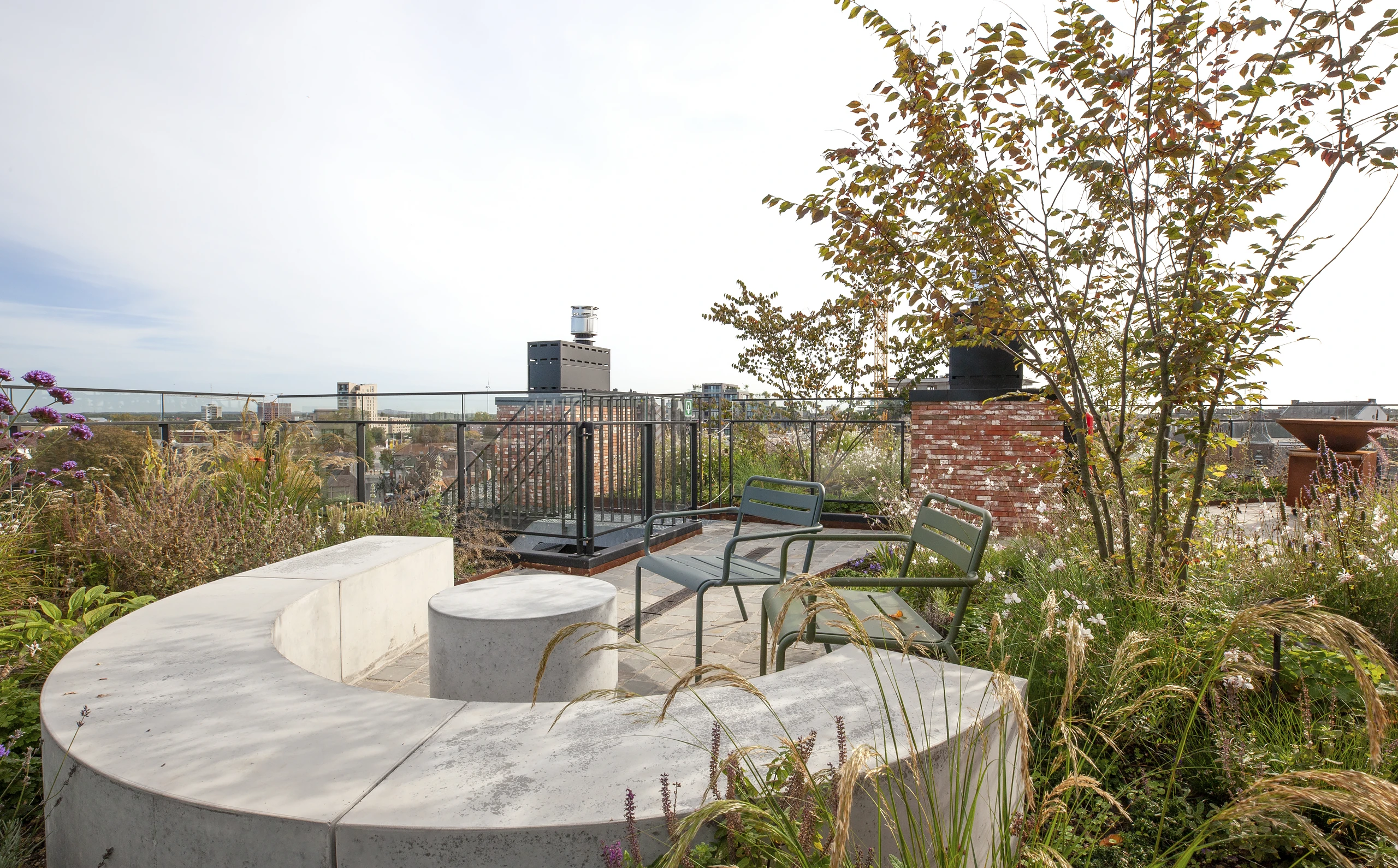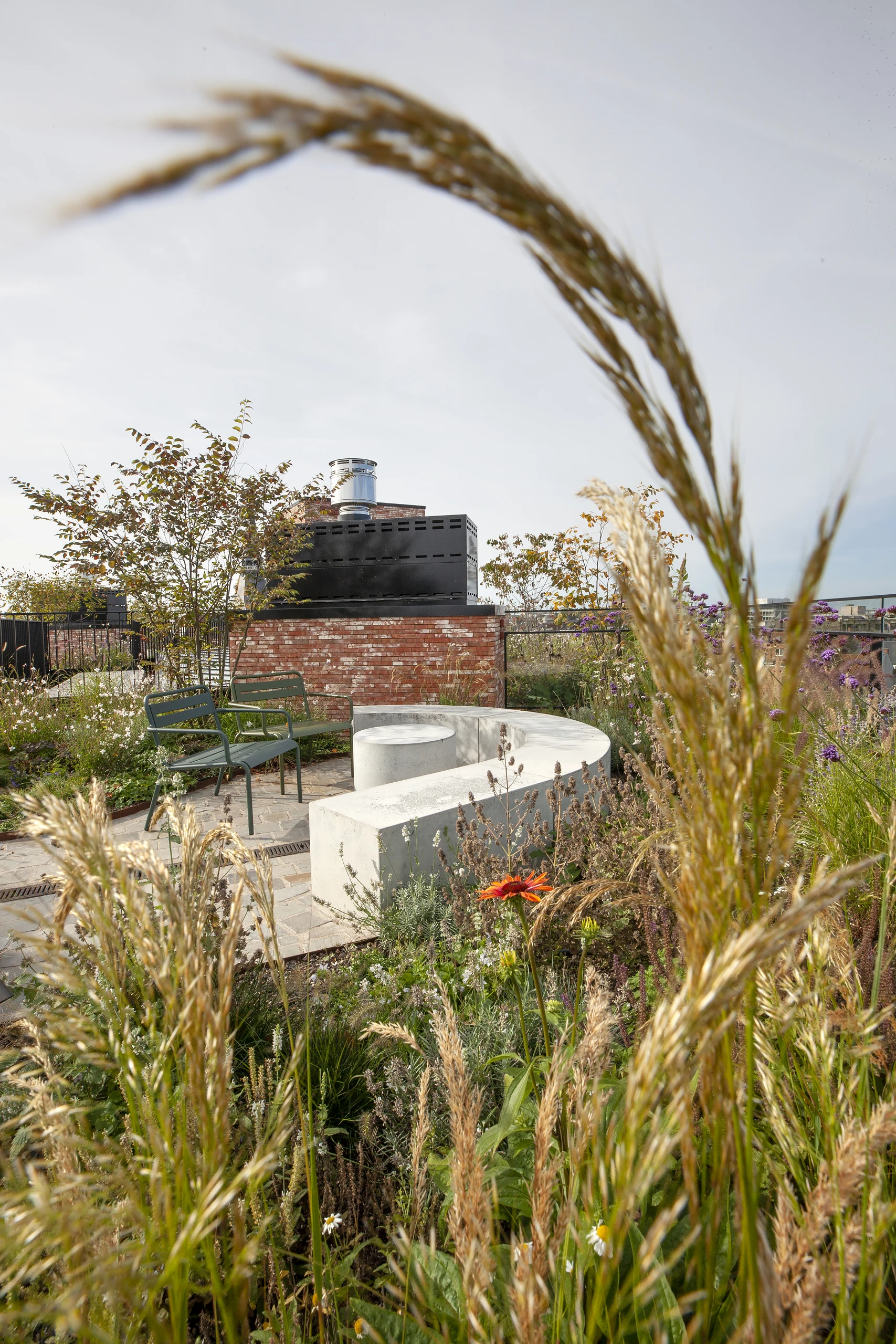- Location: Hasselt, Belgium
- Program: 2 restaurant facilities, 39 studio’s and underground parking
- Area: 3.250 m²
- Year: 2021
- Status: Realized
Situated in the city center of Hasselt, a new development aims to revitalize the connection between the bustling Zuivelmarkt and Raamstraat by introducing a pass-through and transforming a courtyard into a semi-private square, thus enhancing the public character of the area. To compensate for the space lost to these communal areas, a distinctive architectural feature – a dynamic monolith – was erected along Raamstraat. This structure is designed to integrate seamlessly with its surroundings, ensuring that it does not overshadow the streetscape, while maintaining privacy and quality of life for both future and neighboring residents.
The design philosophy mirrors that of a sculptor, starting with a simple rectangular form that is refined by its surroundings, taking into account views and lighting, to create a dynamic, context-sensitive structure. The building’s unique hexagonal shape fosters a dialogue with viewers, drawing them in and establishing the plaza as a focal point for the city and local businesses. Recesses in the facade, along with a green terrace, break up the mass of the building and add to its dynamic character.
The rhythmic facade, accented with brick “fins,” provides both tranquility and privacy, allowing clear views only from directly in front. The use of traditional red brick, set on a transparent base, allows the building to stand out, yet harmonize with its surroundings. Inside, a spacious atrium lit by a central void creates a sense of community, with thoughtfully designed studios offering varying degrees of intimacy, promising a meticulous future interior design to maximize functionality and comfort.

